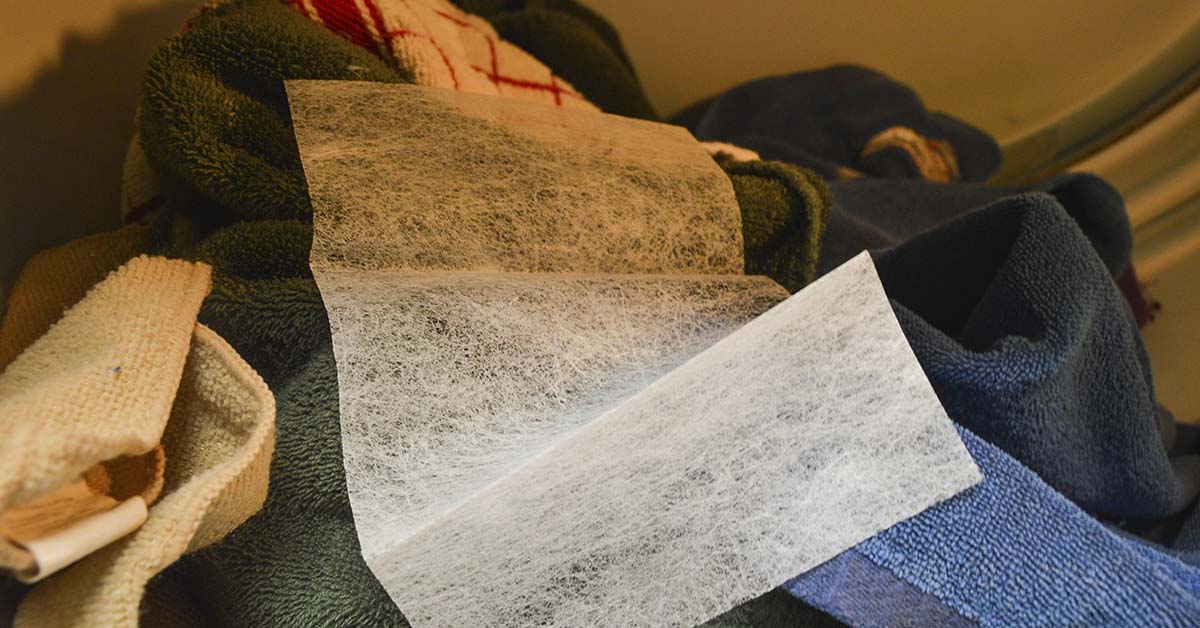Dryer sheets have become a staple in many households, offering the allure of reduced static, softer fabrics, and a pleasant fragrance. However, concerns have been raised regarding the safety of these household products. This article aims to provide an in-depth analysis of dryer sheets, examining their purpose and potential negative aspects and exploring alternative options for those seeking to avoid them. By delving into scientific research and considering various perspectives, we can gain a better understanding of the safety implications and make informed choices.
Overview of Dryer Sheets and Their Purpose

Dryer sheets are thin fabric pieces made of non-woven polyester material. They add certain softeners to different sheets to achieve specific effects, such as softening fabrics, reducing static cling, and imparting a fresh scent to clothes.1 When placed in the dryer with the laundry, the heat activates the softening agents, resulting in the desired outcomes.
Several sources, including the Environmental Working Group (EWG), have expressed concerns about the potential health hazards associated with dryer sheets. The EWG points out that heat-activated sheets can contain a combination of chemicals that may harm human health, damage the environment, and pollute the air inside and outside the home.2 Quaternary ammonium compounds, a common ingredient in dryer sheets, link to asthma exacerbation and skin irritation. However, it’s important to note that these risks are primarily in occupational settings with longer and more intense exposure rather than in typical household use.
Read More: List: Worst Laundry Detergent Brands with Ingredients Linked to Allergies, Cancer
Research on Chemicals Released and Environmental Impact

A study published in the journal Air Quality, Atmosphere & Health in 2011 examined the chemicals present in air vents after using various laundry products, including dryer sheets. The researchers identified 25 different volatile organic compounds (VOCs), with some classified as hazardous air pollutants (HAPs), including acetaldehyde and benzene. It is crucial to consider that the study focused on the concentrations found in dryer vents, which may not accurately reflect the exposure levels during normal usage. Furthermore, the Food and Drug Administration (FDA) and Environmental Protection Agency (EPA) regulate them and have not signaled any significant safety concerns regarding their chemical components.
Dryer sheets, like other laundry products, undergo stringent safety regulations by the FDA and EPA. These regulatory bodies have not raised alarm bells regarding the safety of the chemicals used in the sheets when used as intended. Industry groups, such as the American Cleaning Institute, have challenged studies that raise concerns, citing the absence of scientific standards and proper controls. It is worth noting that self-reporting of symptoms related to fragranced products has played a role in identifying potential adverse effects, prompting further research.
Read More: Is Laundry Detergent Toxic? 7 Questionable Ingredients to Look Out For
Negative Aspects of Dryer Sheets and Alternatives

Beyond the safety concerns, there are other drawbacks. They can leave a residue on clothes, diminishing their absorbency and potentially increasing their flammability.3 Additionally, most are single-use and non-compostable, contributing to waste and environmental pollution.4
Fortunately, there are viable alternatives to traditional dryer sheets. Wool dryer balls, which create space between clothes to improve airflow and reduce static cling, offer a natural and reusable option. Homemade alternatives involving the use of white vinegar or baking soda during the wash cycle provide natural softening and anti-static properties. Aluminum foil balls, an affordable choice, can also minimize static cling when added to the dryer. Reusable static eliminating sheets offer a sustainable alternative useful for multiple loads, reducing waste.5 Lastly, air-drying clothes eliminates the need for sheets altogether, promoting an environmentally friendly approach.
Conclusion

While the safety of dryer sheets remains a subject of debate, it is essential to consider exposure levels and regulatory oversight. While they are subject to scrutiny, industry responses highlight the lack of evidence supporting significant risks associated with their use. Individuals can make informed choices by considering their preferences, health considerations, and environmental impact. The availability of alternative options provides eco-friendly alternatives for those seeking to avoid traditional use ones, fostering sustainable laundry practices.
Sources
- “Are Dryer Sheets Full of Toxic Chemicals?” Snopes. Kim LaCapria. may 14, 2016.
- “Should You Use Dryer Sheets?” Slate. Hannah Docter-Loeb. April 17, 2023.
- “Are Dryer Sheets Bad For The Environment?.” Think of the Pandas. May 14, 2022.
- “Drying Without Dryer Sheets – The Best Alternatives!” Think of the Pandas. May 14, 2022.

